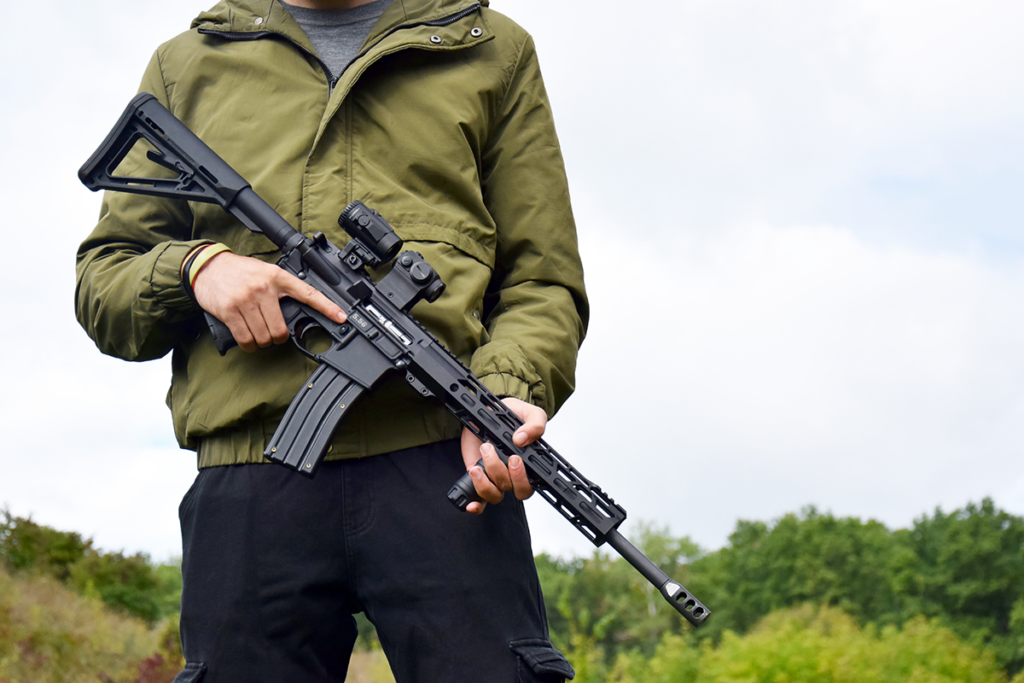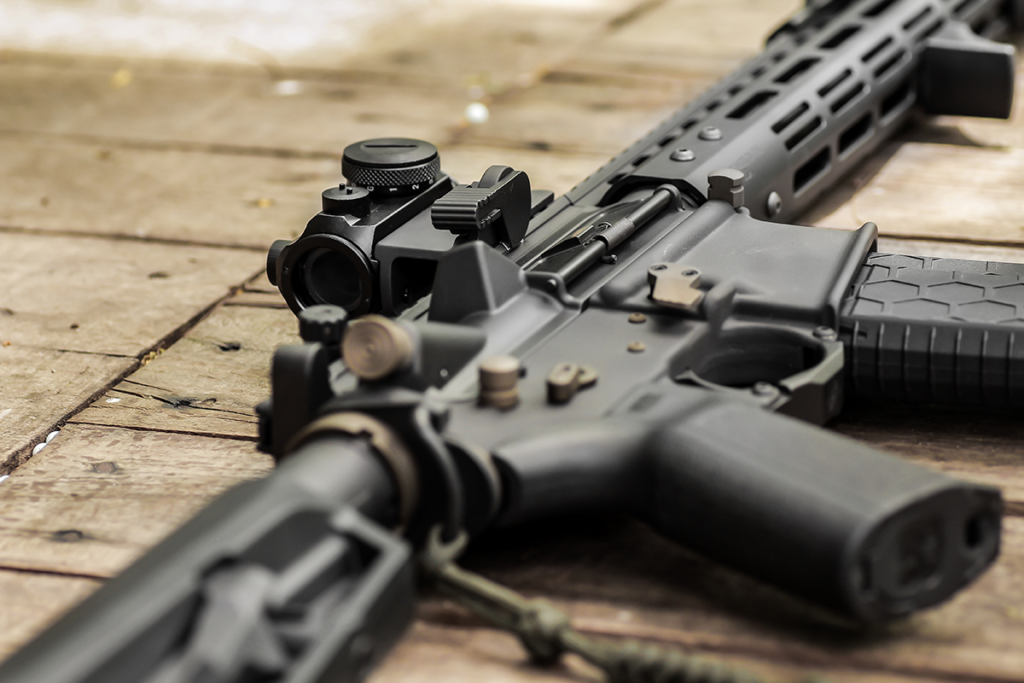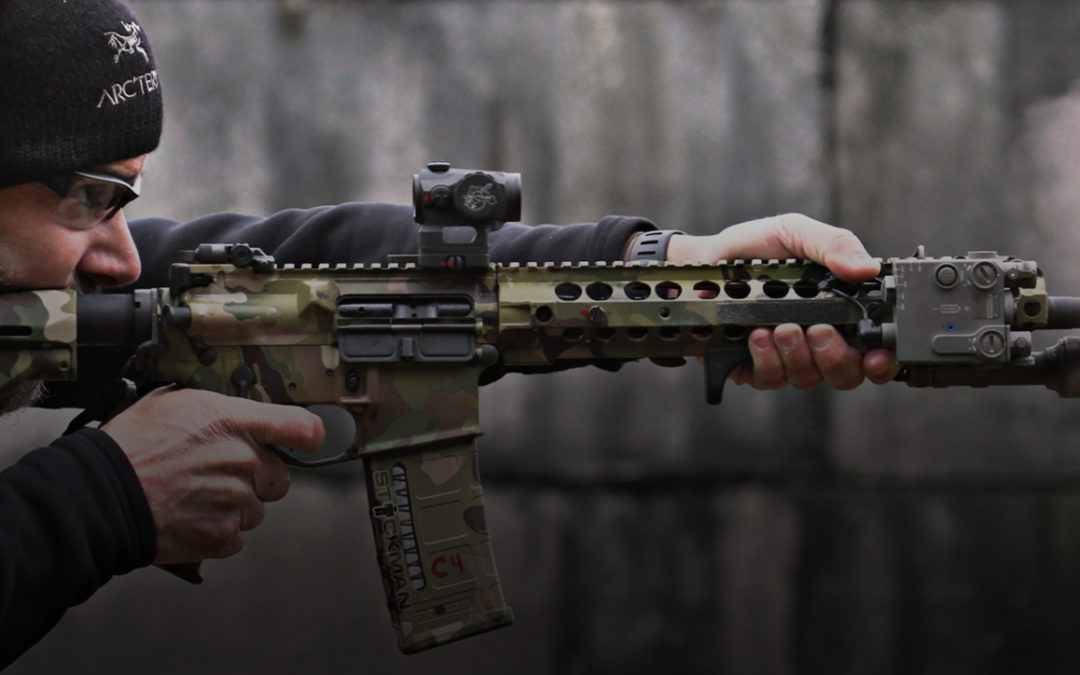Firearm safety is the foundation of responsible gun ownership, and understanding how to clear malfunctions in an AR-15 is a critical skill for anyone who owns or operates one. While the AR-15 is highly reliable, no firearm is immune to malfunctions or obstructions. Knowing how to handle these situations effectively and safely can prevent dangerous situations from escalating into accidents. In this guide, we will cover the procedures for clearing major obstructions and malfunctions in an AR-15 and emphasize the importance of always adhering to firearm safety rules.
Firearm Safety: The Four Fundamental Rules
The four fundamental rules of firearm safety must be ingrained into every gun owner’s behavior, especially when dealing with malfunctions. These rules are designed to prevent accidents and keep everyone safe:
- Treat every weapon as if it were loaded – Always assume a firearm is loaded, even when you have cleared it. This mindset helps prevent negligent handling and accidents.
- Never point your weapon at anything you do not intend to shoot – Keeping the muzzle pointed in a safe direction ensures that in the event of an accidental discharge, no one is harmed.
- Keep your weapon on safe until you are ready to fire – The safety is a critical tool for preventing the weapon from firing when you don’t intend it to. Only disengage it when you are on target and ready to fire.
- Keep your finger off the trigger until you intend to fire – Most accidental discharges occur because someone placed their finger on the trigger too early. Always maintain trigger discipline until you are ready to shoot.
These safety rules are vital because clearing a malfunction often involves manipulating the firearm in ways that can lead to accidents if you’re not careful. Stress and frustration during a malfunction can tempt even experienced shooters to skip safety steps. By following these rules, you ensure that safety remains your top priority, no matter the situation.

Common Sense Firearm Handling
In addition to the fundamental safety rules, using common sense when handling firearms can prevent accidents and injuries. For example, flagging and self-flagging—where the muzzle is unintentionally pointed at others or at yourself—are dangerous behaviors that must be avoided at all costs. When you’re frustrated by a malfunction, it’s easy to become careless. However, careless actions can have deadly consequences, even with an unloaded firearm.
Flagging and Self-Flagging
Flagging occurs when you point the muzzle of your firearm at something or someone you don’t intend to shoot, breaking one of the core safety rules. Similarly, self-flagging happens when you inadvertently point the firearm at yourself, such as when transitioning positions or working on the rifle. Even when your AR-15 is unloaded or jammed, flagging remains a major concern because you’re creating the potential for a negligent discharge. It’s essential to maintain muzzle awareness at all times, especially during malfunctions when your focus might shift to fixing the problem.
Never Look Down the Barrel
Another critical rule often overlooked in moments of frustration is the danger of looking down the barrel. If your AR-15 has an obstruction or is malfunctioning, you might be tempted to inspect the barrel for visible issues. Never, under any circumstances, look down the barrel of your firearm, even if you believe it’s unloaded or safe. Misfires, hangfires, or other malfunctions could cause the gun to discharge when least expected. Instead, ensure that the weapon is fully unloaded by removing the magazine, locking the bolt to the rear, and visually inspecting the chamber from the rear of the firearm.
This cannot be overstated: safe firearm handling, even in moments of malfunction or frustration, is crucial to preventing deadly accidents. Carelessness in these moments is often when accidents happen.
Why Safety Rules Matter During Malfunctions
When a firearm isn’t functioning properly, some shooters may feel compelled to act hastily or skip basic safety protocols. This is when following safety rules becomes more important than ever. Here are a few key reasons why safety rules must be followed during a malfunction:
- Stress and Frustration Can Lead to Mistakes: When a weapon malfunctions, it’s easy to become stressed or frustrated. This emotional response can cloud judgment, leading to poor decisions like flagging, self-flagging, or handling the gun without proper care. By adhering to the four safety rules, you build muscle memory that overrides emotional responses, helping you stay safe even under pressure.
- Potential for Negligent Discharge: Malfunctions like double feeds, stovepipes, or bolt overrides require you to manipulate the rifle more than usual. This manipulation often involves removing the magazine, pulling back the bolt, and even manually clearing rounds from the chamber. If you forget to keep the safety on or place your finger on the trigger too early, you risk an accidental discharge, which could cause injury or death. By keeping your finger off the trigger and engaging the safety, you minimize the risk of such incidents.
- Risk of Misfires or Hangfires: Sometimes, a malfunction occurs because the round fails to fire when you pull the trigger. A round could still be in the chamber, and though it didn’t go off immediately, it could be a delayed reaction (hangfire). If you mistakenly believe the weapon is safe and start inspecting it without taking proper precautions, you could be injured by the delayed discharge. Always handle the firearm as if it could fire at any moment, which is why the rule “Treat every weapon as if it were loaded” is so vital.
- Increased Muzzle Manipulation: Clearing malfunctions often requires adjusting the firearm’s position, tilting the rifle to inspect the chamber, or manipulating the bolt. Each time you move the firearm, there’s a risk of inadvertently flagging yourself or others. If you consistently keep the muzzle pointed in a safe direction, you reduce the risk of accidents even as you move the gun around to clear the malfunction.

Clearing Major Obstructions in an AR-15
Let’s explore how to safely clear the most common major obstructions that can occur in an AR-15.
Clearing a Double Feed
A double feed occurs when two rounds attempt to enter the chamber at the same time, jamming the action. Here’s how to resolve it:
- Engage the Safety: Ensure the safety is engaged.
- Remove the Magazine: Press the magazine release and remove the magazine from the rifle to prevent further rounds from entering the chamber.
- Lock the Bolt to the Rear: Pull the charging handle fully to the rear and lock the bolt in the open position.
- Clear the Obstruction: Manually remove the rounds causing the jam.
- Inspect and Reinsert the Magazine: Ensure the magazine isn’t damaged or faulty. Reinsert it into the magazine well.
- Chamber a Round: Pull the charging handle to load a new round and test fire to confirm proper function.
Clearing a Bolt Override
A bolt override occurs when the bolt carrier fails to return fully to battery, causing a jam.
- Engage the Safety: First, engage the weapon’s safety.
- Remove the Magazine: Eject the magazine to avoid feeding more rounds into the chamber.
- Lock the Bolt Open: If possible, lock the bolt in the rear position.
- Manually Clear the Obstruction: Use a malfunction tool or multi-tool if necessary to help manipulate the bolt carrier and clear the jam.
- Chamber a New Round: Reinsert the magazine and chamber a new round. Test fire the rifle to ensure it’s working properly.
Clearing a Stovepipe (Failure to Extract)
In a stovepipe, a spent casing fails to fully eject and becomes lodged in the ejection port.
- Engage the Safety: Always start by engaging the safety.
- Remove the Magazine: Remove the magazine to prevent further rounds from entering the chamber.
- Manually Clear the Obstruction: Tilt the rifle to the side and either shake or manually remove the casing.
- Chamber a New Round: Pull the charging handle to chamber a new round and test fire to ensure proper function.
Clearing a Squib Load
A squib load is when a round is fired but the bullet becomes lodged in the barrel, typically due to underpowered ammunition or a dirty barrel.
- Stop Firing Immediately: A squib load can be dangerous if you fire another round, as it could cause the barrel to rupture.
- Unload the Firearm: Remove the magazine and lock the bolt to the rear. Check the chamber to ensure it’s clear.
- Inspect the Barrel: From the rear, check the barrel for obstructions. Do not look down the barrel from the muzzle end.
- Use a Cleaning Rod: If a squib load is present, use a cleaning rod to safely push the bullet out from the chamber side. Never fire another round until the obstruction is cleared.

Staying Safe and Prepared with Your AR-15
Clearing malfunctions in an AR-15 requires both technical skill and strict adherence to firearm safety rules. Many shooters, when confronted with a malfunction, may feel frustrated and be tempted to take shortcuts or ignore basic safety practices. This is exactly when those safety rules are most important. Following the four fundamental safety rules—treating the firearm as loaded, keeping the muzzle pointed in a safe direction, engaging the safety, and keeping your finger off the trigger—will protect you and others from accidents.
Combining the safety rules with common sense firearm handling, like avoiding flagging, self-flagging, and never looking down the barrel, ensures that even in moments of frustration or confusion, you maintain control and safety. By respecting these guidelines and using proper techniques to clear obstructions, you’ll not only protect yourself and others but also extend the lifespan of your AR-15, ensuring reliable performance for years to come.
Even the best guide or online information cannot substitute real-life training and professional guidance. Handling firearms safely, especially when dealing with malfunctions, requires hands-on experience under the supervision of a qualified instructor. Learning from someone who can correct mistakes on the spot is far safer than relying solely on your own judgment, particularly if you are new to firearms. Real-life training allows for immediate feedback and ensures you develop proper techniques, which is crucial for maintaining safety and avoiding potentially dangerous habits.

